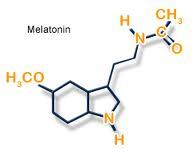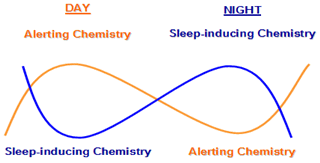JET LAG
Jet lag is a temporary disruption in a person's circadian rhythm that results from traveling across time zones. Symptoms tend to be worse if the person lost sleep during travel, is stressed, drinks too much alcohol or caffeine, or didn't move around enough during the flight. Jet lag may cause daytime sleepiness, general feelings of fatigue, headache, stomach problems and insomnia. These symptoms usually appear within a day or two of flying across more than 2 time zones and tend to be worse when flying in an eastern direction. It generally takes 1 day to adjust for each time zone crossed(33).
SHIFT WORK
Symptoms of shift work occur when a person's work schedule and circadian rhythm are not synchronized. Certain occupations force a person to work when the body should be sleeping and sleep when they should be awake. Some people adjust better than others but shift workers tend to get less quality sleep than those who work during the day. These people struggle with sleepiness and mental lethargy on the job. This leads to reduced productivity and increases the risk of workplace injuries(33).
DELAYED SLEEP PHASE DISORDER
Delayed sleep phase disorder occurs when a person's circadian rhythm is significantly delayed. As a result, they sleep and wake much later than others would and have difficulty keeping normal hours. These people are unable to get to sleep until the late hours of the night regardless of how hard they try or how early they go to bed. Regardless of the time of night they fall asleep, they follow the same sleep patterns in regards to duration and stages of sleep. This disorder is most commonly found in teenagers and many grow out of it(2). It can be treated by light therapy(34) or chronotherapy. The use of melatonin has also been shown to advance natural melatonin release, decrease time required to fall asleep and regulate the sleep-wake rhythm overall(35). Exercise at specific points throughout the day may also be effective in dealing with delayed sleep phase disorder. More research is needed to determine when and how much exercise is most effective(33).




